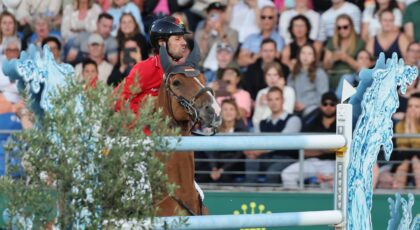Today I thought I’d venture down the horse’s leg as there are a lot of curious names down there. We will start at the bottom and work our way up completely out of order.
First on the docket is…
Coffin Bone
I’ve often wondered why this bone was given such a morbid name, though it’s a bone of many names. Vets are likely to call it the third phalanx, the distal phalanx or even the P3. We laymen, however, prefer to call it the pedal bone or coffin bone.
Anyway, this most southern of bones in a horse’s leg is most commonly known as the coffin bone and it’s called that because it’s encased within the hoof wall creating a coffin-like situation.
Such a simple answer.
Pastern Bone
Well, the origin of this name was unexpected.
Horses have two pastern bones, the long and the short pastern and together they form the general pastern area, which is below the ankle and above the hoof. These bones are also referred to as the first and second phalanx, the coffin bone, as you know, is the third phalanx.
The word pastern comes from the word pastron, meaning “shackle fixed on the foot of a horse or other beast”. And pastron comes from Old French pasturon and pasture because horses were often shackled (hobbled or tethered I suspect) when out on pasture, likely before fencing and cross fencing became a big thing.
And where would we put hobbles or “shackles” on a horse? That is correct, around the pastern. Such an odd way to name something.
Navicular Bone
This was a surprise.
The word navicular means “boat-shaped” and has been used in reference to a particular bone in the foot since the 15th century. I should add that when I say foot, I mean our foot because we have navicular bones as well, which is news to me.
The word as we know it stems from the Late Latin word navicularis, which comes from navicula and navis meaning “ship.” This is where we get the word navy and naval from, which, after learning the above, is not overly surprising.
So many questions answered in one fell swoop.
Sesamoid Bone
I won’t lie, this is a little anticlimactic.
The sesamoid bone was given this name due to its similar shape to a sesame seed. Yup, a sesame seed.
I will say that the word sesame comes from the Late Babylonian word shawash-shammu, and the only reason I mention it is because it’s a fun word to say. You’re welcome.
Curious now about the oid ending of the word I looked it up and learned it’s a word-forming element meaning “like, like that of, thing like a…” which comes from the Greek eidos meaning “form.” Therefore, when we say, “sesamoid bone” what we are really saying is, “the bone that looks like a sesame seed.”
The other interesting fact I learned about these bones is that we have them as well. A sesamoid bone is a type of bone rather than a specific bone. They are bony nodules within a tendon that passes over an angular structure. Humans can have up to 42 sesamoid bones mostly in our hands and feet but kneecaps are also sesamoid bones.
Horses, on the other hand, have 12 sesamoids, three per limb. Two that sit behind the fetlock joint and one, brace yourself for a major plot twist, that’s also known as the navicular bone. The mind boggles.
Cannon Bone
This does, as you might have imagined, relate to the mounted heavy artillery gun that’s designed to hurl projectiles at enemy forces with the use of gunpowder. But how the dickens do we go from a projectile-throwing piece of weaponry to a horse bone?
Fair question.
The word is derived from the Italian word cannone, which means “a large tube, barrel”, and that comes from the Latin word cannan meaning “reed, tube,” which is essentially what a cannon bone is. It makes perfect sense.
Mysteries Solved
I’ve always wondered about these names, and I’m delighted I finally got around to looking into them. Never a day is wasted when so much is learned.


 January 30, 2024
January 30, 2024 

























